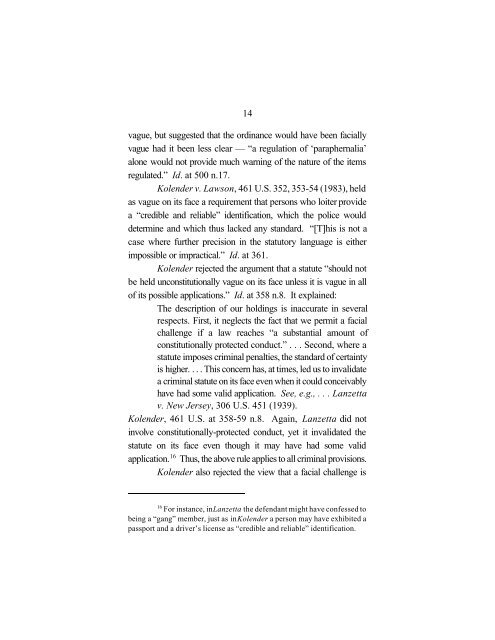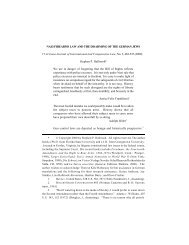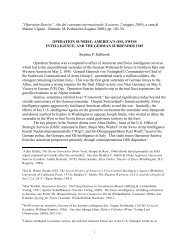Petition for Writ - Stephen Halbrook
Petition for Writ - Stephen Halbrook
Petition for Writ - Stephen Halbrook
Create successful ePaper yourself
Turn your PDF publications into a flip-book with our unique Google optimized e-Paper software.
14<br />
vague, but suggested that the ordinance would have been facially<br />
vague had it been less clear — “a regulation of ‘paraphernalia’<br />
alone would not provide much warning of the nature of the items<br />
regulated.” Id. at 500 n.17.<br />
Kolender v. Lawson, 461 U.S. 352, 353-54 (1983), held<br />
as vague on its face a requirement that persons who loiter provide<br />
a “credible and reliable” identification, which the police would<br />
determine and which thus lacked any standard. “[T]his is not a<br />
case where further precision in the statutory language is either<br />
impossible or impractical.” Id. at 361.<br />
Kolender rejected the argument that a statute “should not<br />
be held unconstitutionally vague on its face unless it is vague in all<br />
of its possible applications.” Id. at 358 n.8. It explained:<br />
The description of our holdings is inaccurate in several<br />
respects. First, it neglects the fact that we permit a facial<br />
challenge if a law reaches “a substantial amount of<br />
constitutionally protected conduct.” . . . Second, where a<br />
statute imposes criminal penalties, the standard of certainty<br />
is higher. . . . This concern has, at times, led us to invalidate<br />
a criminal statute on its face even when it could conceivably<br />
have had some valid application. See, e.g., . . . Lanzetta<br />
v. New Jersey, 306 U.S. 451 (1939).<br />
Kolender, 461 U.S. at 358-59 n.8. Again, Lanzetta did not<br />
involve constitutionally-protected conduct, yet it invalidated the<br />
statute on its face even though it may have had some valid<br />
application. 16 Thus, the above rule applies to all criminal provisions.<br />
Kolender also rejected the view that a facial challenge is<br />
16<br />
For instance, in Lanzetta the defendant might have confessed to<br />
being a “gang” member, just as in Kolender a person may have exhibited a<br />
passport and a driver’s license as “credible and reliable” identification.






